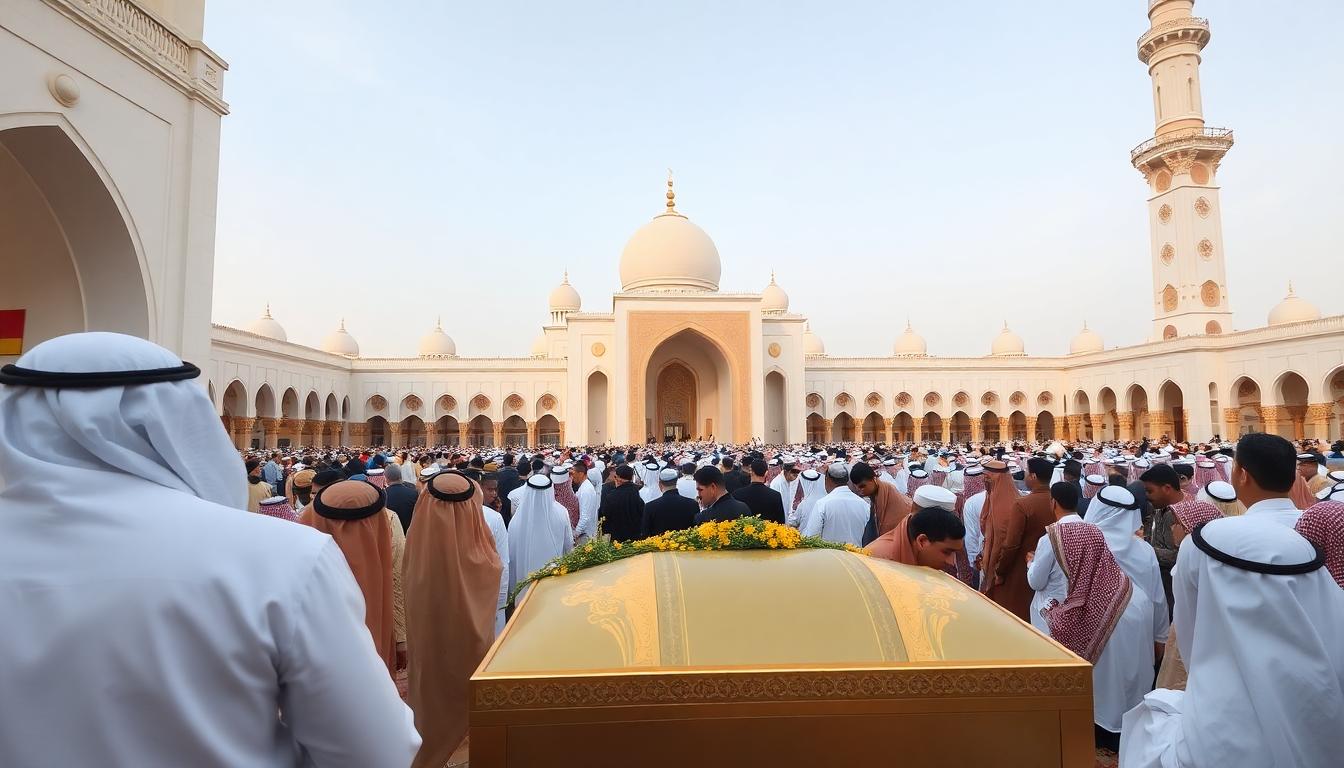Introduction
On July 19, 2025, the world mourned the passing of Prince Al-Waleed bin Khaled bin Talal Al Saud, known as the “Sleeping Prince.” For nearly 20 years, his story touched millions—spanning hope, heartbreak, and unwavering devotion. This is not just a tale of medical endurance, but a human journey that shows the depth of love, faith, and tough decisions that families, doctors, and society face.
The Tragic Beginning
Prince Al-Waleed’s story began bright and full of promise. As a young Saudi royal, he was studying at a prestigious military college in London. In 2005, everything changed. A devastating car accident caused severe injuries—brain hemorrhage and internal bleeding. He was only 15. The crash was serious, and the world of the royal family turned upside-down overnight.
Doctors fought for his life. He survived, but didn’t wake. Surgeons, neurologists, nurses, and family all came together, facing the unknown of a traumatic brain injury.
Coma: The Unknown Journey
For most people, a coma means quiet hospitals and waiting rooms—but for the Al Saud family, it became their life. Coma is complex. Some patients wake up after days, weeks, or months. Prince Al-Waleed lingered in this in-between state for years—then a decade, then nearly two.
At King Abdulaziz Medical City in Riyadh, he stayed on advanced life support. He never fully regained consciousness but would sometimes move his fingers or tilt his head. These small signs brought hope, but doctors knew they weren’t yet evidence of real brain recovery.

Love That Would Not Give Up
Every day, the prince’s room was filled with love. His father, Prince Khaled bin Talal, became a symbol of hope. Even as doctors explained the slim chances of full recovery, the family remained committed. It wasn’t just about medical possibilities. It was about faith—a belief that God decides life and death, not man nor machine.
Family members took turns at his bedside. They whispered prayers, read verses from the Quran, spoke to him about the world, and held his hand. Birthdays, holidays, and milestones came and went, always celebrated with a soft word or gentle touch by his side.
Across Saudi Arabia and the Middle East, sympathy grew. Social media kept hope alive. Posts, prayers, and hashtags spread, sometimes fueled by rumors of improvement, but always with deep empathy.
Medical Dedication
The prince’s survival set a rare record in medicine—almost 20 years in a coma. Modern intensive care helped. Machines quietly breathed for him, monitors tracked every heartbeat and breath, and teams of doctors and nurses worked in shifts.
His medical journey offers a window into the unseen side of critical care: the delicate balance of keeping a body alive, fighting infections, and watching for the faintest change. Every movement, every blink, every slight response was closely checked, measured, and debated among specialists.

The Ethics of Life and Choice
Stories like the Sleeping Prince’s raise big questions: How long should you keep someone alive on machines if there is no real hope of recovery? Who decides—doctors, parents, society, or faith? For Prince Al-Waleed, his father’s faith led the way. He refused to give up, seeing his son’s life as a divine trust.
Medical teams and ethicists sometimes debated these issues. Long-term coma care uses large hospital resources. Some see this as a testament to love; others see it as a burden. For the family and many in Saudi Arabia, hope and faith were more important than any policy.
For nearly 20 years, the balance between hope and hard truth played out in that hospital room.
Social Media, Rumors, and the Power of Hope
The internet kept Prince Al-Waleed’s story alive long past the regular news cycle. Every year, updates circulated. Sometimes, viral stories claimed he had woken up or made great strides. While most of these were false, they kept public attention—and hope—alive.
People around the world sent messages to the family. Some simply offered prayers or good wishes. Others drew hope for their own families by seeing love and perseverance in the face of tragedy.
The Final Goodbye
On July 19, 2025, Prince Al-Waleed’s story came to its end. After so many years of waiting and wondering, he passed away at age 36. His family was there at his side, just as they always had been.
The funeral was held at a grand mosque in Riyadh. Dignitaries, family, and the public came to pay their respects. The ceremony reflected both Saudi tradition and deep religious faith. For some, his passing was the closing of a long, hopeful chapter. For others, it was a reminder that every life is precious, no matter how quiet or still.

What His Story Means for Medicine—and For Us
Prince Al-Waleed’s case is now part of medical history. There are few accounts of people surviving in a coma this long. His story will guide doctors, nurses, ethicists, and families facing difficult choices for years to come.
It also reminds us of the strength found in love—a father’s devotion, a family’s endless hope, and a community’s shared prayers. The questions raised are not just medical or religious, they’re deeply human: How do we define life? When do we let go? How do we support each other through the hardest trials?
Closing Thoughts
The Sleeping Prince spent half his life in silence, surrounded by whispers of hope and waves of prayer. In his stillness, he taught thousands about patience and perseverance. His family’s faith and determination inspired millions worldwide.
Today, as we remember Prince Al-Waleed bin Khaled Al Saud, we honor not just a lost future, but also the quiet heroism of those who love fiercely, hope endlessly, and say goodbye gently when time finally calls.
Key Takeaways
- Prince Al-Waleed fell into a coma at 15 after a London car crash.
- Nearly 20 years of care made his case medically unique.
- His family’s hope never faded, driven by faith.
- His story raises ethical, medical, and emotional questions.
- The world mourns not only a prince, but the meaning found in hope and love.
To contact us click Here .







